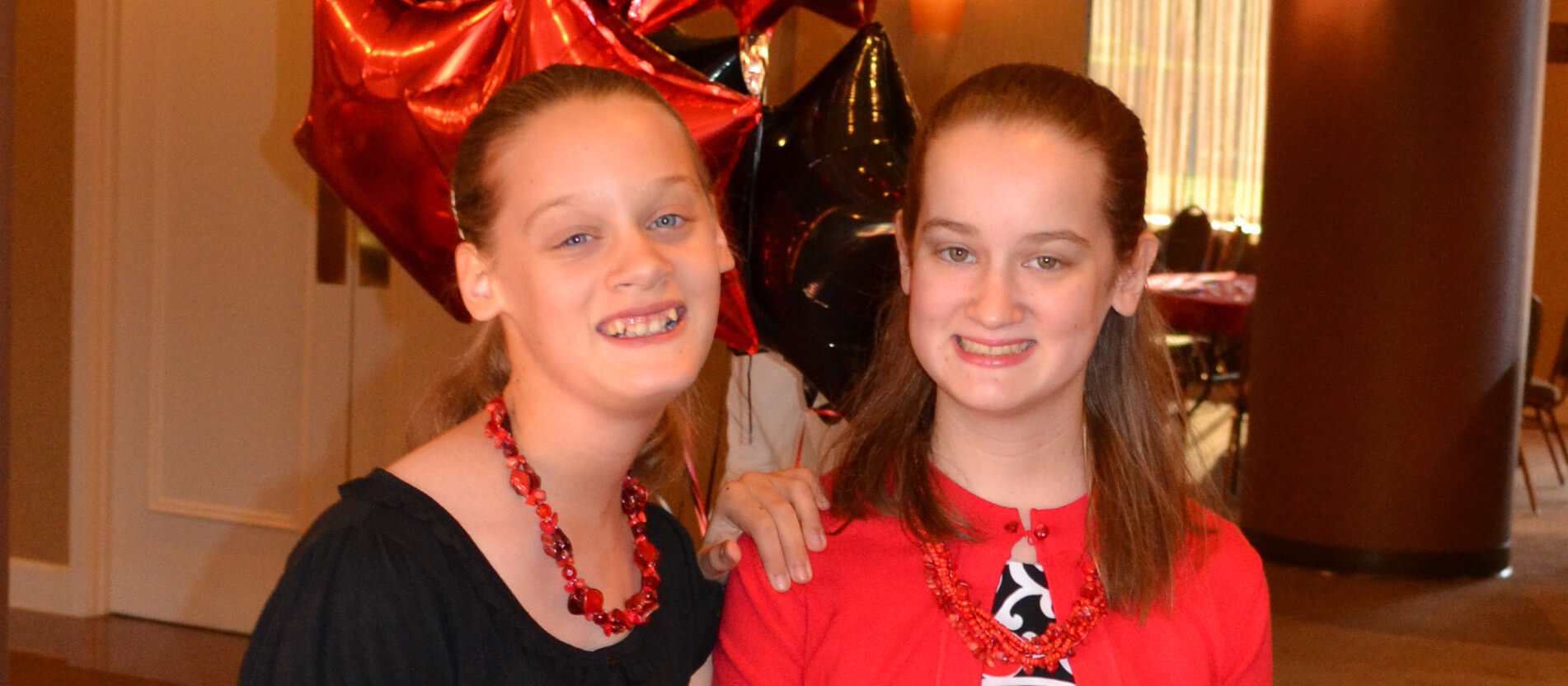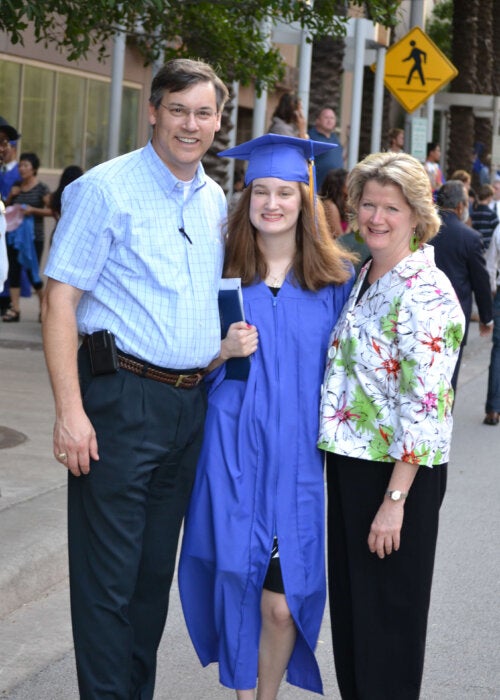
Reposted from NFXF Quarterly, President’s Note, Issue #44, March 2012
How did I wind up here?
Eight short years ago I had never heard of Fragile X, let alone CGG repeats, carriers, and mGluR theory. As I settle (humbly) into my term as President of the Board of Directors of the National Fragile X Foundation, I find myself spending considerable time thinking of how all of those fit together— not to mention how I got here.
The short answer is simple: Christy and Kenney…the two Daddy’s girls in my life living with Fragile X. But that explains only part of it. As a I chose the NFXF to make
a down payment on a debt
I can never repay.husband and father, one does whatever one can to contribute to the cause, but there are any number of ways one can support it. I chose the NFXF to make a down payment on a debt I can never repay.
As many of you know, before I learned of FX and CGG repeats, Sherri and I bounced from doctor to doctor, all of them highly educated and with the best of intentions. We were looking for an explanation for Kenney’s “quirkiness.” As parents, we knew it when we saw it, as did family and friends, but we could not put our finger on why…
- At three months, she wanted to drink her baby bottle while propped on couch pillows rather than while cuddling with Daddy.
- At three years, she could pick out a Judds song on the radio just a few bars in, and later memorize every word, only to sing along a few bars ahead of Wynonna.
- In grade 3, she read at middle school level, and could tell you about the lead character’s red shirt in chapter 22— but not the theme of the book.
 With every well intentioned-but-missed diagnosis came a similar misplaced intervention. (I shudder to this day looking back on those exercises at the dining room table forcing Kenney to maintain eye contact as we talked…I didn’t see it then, but I am pretty sure there was smoke coming out of her ears from a little brain revving to 10,000 rpm.) This went on for the better part of 12 years (the searching, though thankfully not the eye contact exercises, which were only a short stop on our journey). We ultimately “settled” on an Asperger’s diagnosis for Kenney, and set about accepting her “quirks.”
With every well intentioned-but-missed diagnosis came a similar misplaced intervention. (I shudder to this day looking back on those exercises at the dining room table forcing Kenney to maintain eye contact as we talked…I didn’t see it then, but I am pretty sure there was smoke coming out of her ears from a little brain revving to 10,000 rpm.) This went on for the better part of 12 years (the searching, though thankfully not the eye contact exercises, which were only a short stop on our journey). We ultimately “settled” on an Asperger’s diagnosis for Kenney, and set about accepting her “quirks.”
Then along comes her little sister seven years younger, and “the search” begins anew. Unfortunately, while the manifestations were a little different, as were the (mis) diagnoses (Christy’s “floppy baby syndrome” diagnosis was a new one to us), the frustration was the same.
After nearly five years of this déjà vu, we finally got our eureka moment. During a routine visit to the pediatrician, Christy’s doctor recommended we get some genetic testing. He had recently read about a “rare genetic disorder” that manifested itself similar to Christy’s bouncing, hand-flapping, tactile defensive self. I don’t even recall him putting a name on it, but something in his reading made him suggest it more as a potential answer rather than just ruling something else out like so many of the tests before.
Fast forward, and the results came back positive: We were dealing with Fragile X syndrome. Finally, we had a diagnosis.
As with everything else new in our lives today, we “Googled it.” We also immediately tested Kenney, confident from our research that her autism spectrum disorder was also FXS. Not that we could run to the pharmacy and get a pill to “fix it,” but finally knowing what we were trying to fix, and more importantly, that there were so many brilliant people focused like a laser beam on how we do it, to this day makes for quite an elixir for Dad.
The NFXF awareness campaigns
literally and figuratively changed
the lives of everyone in my family.As I would later learn, that reading material of Christy’s doc was not a medical treatise or professional journal, but rather a simple postcard, sent to every pediatrician in the United States, in hopes of increasing awareness. That simple but brilliant idea was the work of the National Fragile X Foundation. I understand the importance of bringing down the age of diagnosis, and why for so many medical and research reasons awareness and early diagnosis is, and always should be, a pillar of the Foundation’s mission. But for me, it’s personal. The NFXF awareness campaigns literally and figuratively changed the lives of everyone in my family. I can only hope that my small contribution to the Foundation’s work might help just one family get that clarity and hope I experienced with our diagnosis – hopefully years before I did.

